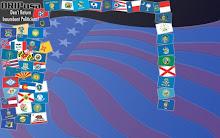By request, here are my notes from today. Thanks to the
rain, the ink was disappearing as I was speaking!/ru
-----------------------------------------------------------
I am not here today to talk about politics.
Let me tell you why.
For example, I'm not really interested in discussions about
this tax or that tax, because it amounts to debating whether
we should prefer a ball and chain around our ankles to a
yoke upon our necks.
In any case, as long as you are forced to pay tax to keep
your own homestead, you are a serf; the amount of such a
tax only defines the depth of your serfdom. Why do we not
hear impassioned calls for a "fair property tax" -- which
would be none whatsoever?
The income tax forces you to share your profits with your
masters to further their own purposes. But even if you
object to the arrangement forced upon you, the property tax
says "you must work within whatever state profit-sharing
arrangement exists, or you will be homeless."
Some people would like to tell you that one political party
or another, one political organization or another, or one
mass media demagogue or another is the answer. We have been
told this for as long as I can remember, for my entire life.
They tell you this because the last thing they want you to
realize is that the answer is actually within each one of
us. What we have been failing to do is to ask the right
questions.
I think I would receive much agreement here if I were to say
that stealing is wrong, regardless of whether or not it has
been legalized.
But is it wrong for the State, in the name of "law and
order", to kill a man who resists stealing of his
possessions and furthermore refuses to be carted off to the
dungeon for mere defense of his property, with knowledge
that he would then both be in the dungeon and his property
would be taken to boot?
What about when the State lies about the value of a man's
property, so that its self-interested taking of the property
can be spun as having come at less cost to the taxpayers?
Let's go back a few generations with the "Ghost of Liberty
Past." The economic historian Murray Rothbard wrote
extensively about colonial America, revealing scores of
events that have fallen down the public-school memory hole.
One such event is the Crown making a gift to William Penn of
what would later become Pennsylvania. The part of the story
that is not told is that it took Penn almost two decades to
successfully establish a government in Pennsylvania, because
the Quakers were not only not interested in political
government, but refused to consent to it, refused to
cooperate, and were otherwise incorrigible in their love for
liberty.
Another event that has been largely forgotten, when it has
not been misrepresented, is Shays' Rebellion. The usual
story that is told is that farmers got themselves into debt,
declared war on the bankers, and were put down by state
troops with merely a dispassionate interest in "law and
order". Well, the usual story omits a very important
detail: the "debt" that the farmers accrued was in the form
of unpaid taxes to the state of Massachusetts to cover debts
the state itself had run up. The mercantile interests
behind the state government, who would have profited from
the taxes, raised the army that put down the rebellion, and
thereby kept the poor in servitude to the state-connected
rich.
These stories hint at the reasons why Thomas Jefferson said
a little rebellion now and then is a good thing. He didn't
mean post angry messages on Internet message boards. He
didn't mean go door to door and try to convince people of
the correctness of your political views. Nor did he mean to
provoke violent confrontation, as anger and frustration
tends to lead to. He meant intelligent, calculated
resistance to political power, together with your families,
neighbors, and friends.
Do you really want independence on this Independence Day?
Resolve to do like the Quakers did. Buy some fertile land
somewhere you wish to live, and as time goes by, buy even
more land from the surrounding areas. Sell plots within
your land to family and friends who share your beliefs.
When someone comes in from some faraway government
pretending to have the authority to order you around,
politely tell them to leave and not to return.
They are likely to return anyway -- given that government
will have no other gods before it -- but by owning a large
area of land settled with people who refuse their demands,
their attempts at controlling you will be like trying to
ride a bicycle through a bog. Your little enclave will be
successful at practical resistance where the single family
hiding out in a remote Idaho homestead would not be. A
thousand such enclaves would send Washington D.C. into
bankruptcy proceedings.
If you can't afford land, then find economic independence as
soon as you can. During the bailout votes, there was a lot
of talk about "Going Galt", which is to essentially stop
working in order to stop paying taxes. But, if you are
broke, the power elite will have their way with you, because
he who has the money makes the rules. You will not be able
to buy the land, tools, and other capital you need in order
to live an independent life.
My suggestion instead is to work hard AND pay no taxes.
There is a bustling community on Craigslist of people
buying, selling, and trading everything under the sun, with
no government regulations or taxes involved. Spend your
time when you are away from your corporate job in the
official economy learning to do something that is valuable
in the underground, unofficial economy. And if you have not
yet redeemed your Federal Reserve notes for gold and silver
coin, for heaven's sake, do so while you still can.
Maybe one day, we the people will have the power not only to
vote for a new crop of legislators, but to do as the kings
did when they would dissolve Parliament and send the whole
lot of scoundrels home for a year. Maybe we will one day
have the power to live our lives in our own style, following
our own moral code even when it is in opposition to the
moral code of government.
But until that day comes, declare independence in your head,
and get busy living the way you want to live. Nobody is
going to do it for you. Declare your independence!
--
Ryan C. Underwood
runderwo(at)mail.win.org
[Editor's note: We don't have video from this event yet, but will post when/if available]























